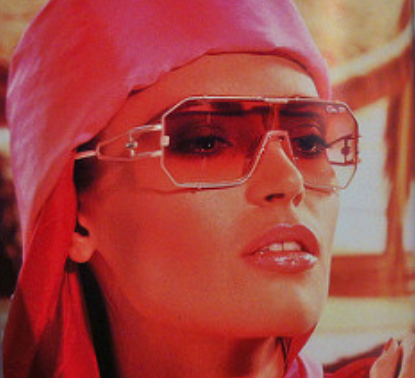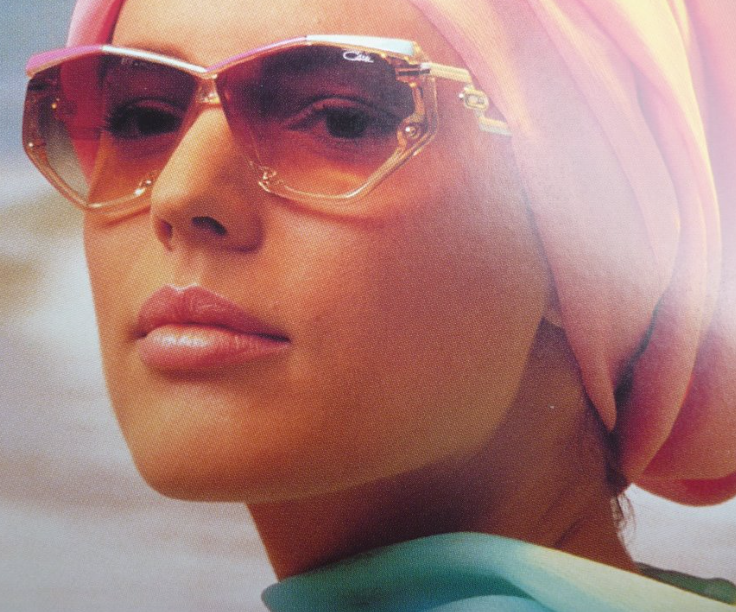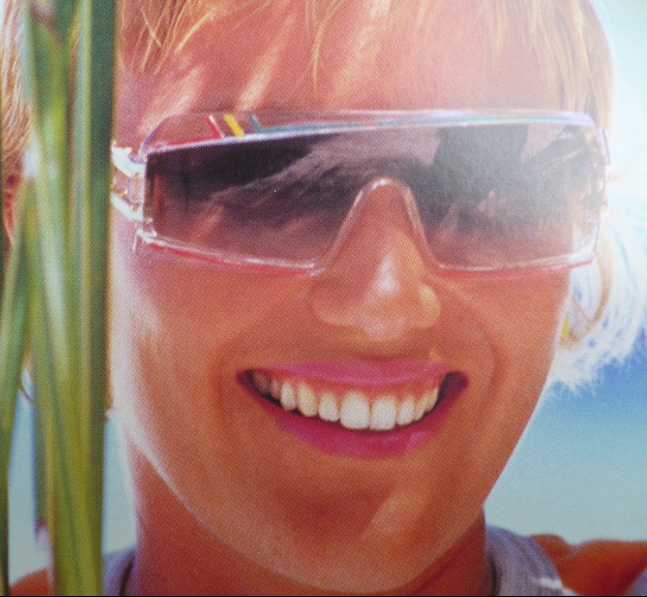Satellite 9. Counterculture
About the exhibition
Eyeglasses by German manufacturer Cazal were considered a sought-after accessory in New York’s Hip-Hop culture of the 1980s. Founded in 1975 by Günther Böttcher and designer Cari Zalloni, the label focused on frames characterized by an unusual, architectural design, high-quality workmanship and practical features like good ventilation. Cazal eyewear attracted attention with striking lines, real gold-plating and the prominent positioning of screws as ornamental elements. The design followed Zalloni’s credo “Cazal eyewear must be recognizable from across the street.” It came as a surprise to the manufacturer that these glasses became a coveted lifestyle accessory in the emerging Hip-Hop culture of South Bronx, New York.
From 12 July, Die Neue Sammlung – The Design Museum is devoting a studio exhibition to this unusual synthesis in the Futuro House in front of the Pinakothek der Moderne, with outstanding eyewear and prototypes juxtaposed with original American hip-hop record covers.
“Cazal eyewear must be recognizable from across the street.”
History of Design: Cazal
In the 1970s when most people regarded glasses primarily as corrective lenses, product designer Cari Zalloni became interested in eyewear and started to develop new definitions for their frames. His approach is based on considering glasses as a form of architecture. Irrespective of the need to wear corrective lenses, Zalloni starts to think about new design solutions for glasses, be they purely aesthetic or functional.
From the outset, his designs are spectacular. He draws traverses, emphasizes or deliberately breaks up straight lines, and puts the spotlight on technical details by prominently placing screws as ornamental elements.
The designer created most of his work for Cazal, the label he founded with Günther Böttcher in Passau/Germany in 1975. Glasses were manufactured in their local factory, where Zalloni constantly moved his ideas forward with new technical improvements. Cheap was not an option either: the ornamental elements of his designs are always gold-plated. The inside of the temples of all Cazal glasses read: Made in West Germany. As a rule, all models don’t have names but simple three-digit numbers.
What came as a surprise to the company was the emergence of a counterculture in the South Bronx, New York, that adapted the glasses and turned them into lifestyle accessories of the emerging Hip Hop culture. However, due to the high price point of the eyewear, robberies, assaults and even fatal attacks were a frequent occurrence.
Hip Hop artists realized that Zalloni’s designs added not only a fashionable touch, but a note of modernism to their style.
At that time, the 904 (see image below) had already been created: continuous, fragile octagonal glasses featuring the prominent dual temples, which perfectly expressed the architecture-based approach.
Probably one of his most spectacular designs was the 951: designed as multifunctional eyewear for surfing, skiing or cycling, fitted with a replaceable elastic band and a float, and boxed in a shock-resistant case. The glasses themselves were a small miracle, thanks to the sophisticated ventilation to prevent the lenses from fogging up, and the removable side lenses to provide wraparound sun protection.
With the 901, Zalloni interpreted the Targa concept for eyewear and a special lens fixture that gave the glasses an airy note.
His most famous glasses were an early work: The 607 is a true icon. Its simple acetate frame imparts a touch of sophistication thanks to its particular shape, and the golden jewelry pieces also serve as hinges and delicately merge into the temples. In the 607/002, these temples were extended and their lines visually broken up.
Zalloni’s iconic style has remained an integral part of pop culture to this day, with many artists and pop stars of all genres still wearing vintage Cazal glasses.
Prototypes
-
Cazal, PrototypePhoto: Cazal
-
Cazal, PrototypePhoto: Cazal
-
Cazal, PrototypePhoto: Cazal
-
Cazal, PrototypePhoto: Cazal
-
Cazal, PrototypePhoto: Cazal



Accompanying program
July 12, 2019, 5 p.m.
Exhibition opening
Futuro House in front of Pinakothek der Moderne
July 12, 2019, 7 p.m.
Panel discussion
Bavarian Center for Transatlantic Relations
Free admission, in English.
What significance did Cazal eyewear have for American Hip-Hop culture? What kind of an impact did the modified spectacles have on Cazal and perception of the company in Germany? As an accompaniment to the studio exhibition of Cazal glasses at the Futuro House in front of Pinakothek der Moderne, Johann Kugelberg (curator and publisher from New York), Harald Böttcher (former owner of Cazal) and Danny Clavesilla aka DJ Supreme La Rock (DJ, producer & turntablist, Seattle) will talk about the connections between German eyewear design and American Hip Hop and their wider implications.
A cooperation between Die Neue Sammlung – The Design Museum and the Bavarian Center for Transatlantic Relations.
More about Futuro
-
Curated by:
Tim Bechthold,
Caroline Fuchs,
Sven ‘Katmando’ Christ,
Mirko Hecktor -
Cooperation partner:
Super Paper München
Sponsored by:
Campari, Cazal, Optik Bartholomä, Brillen Schneider
